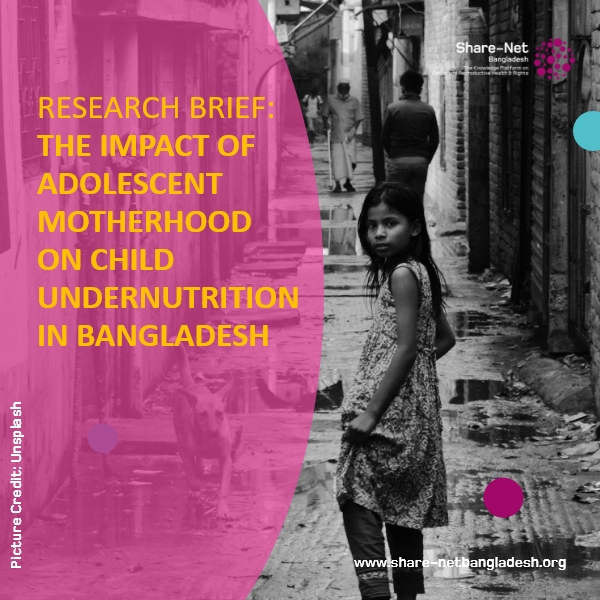Research Brief: The Impact of Adolescent Motherhood on Child Undernutrition in Bangladesh
In Bangladesh, nearly 71% of adolescent girls give birth before turning 19, a trend that has significant implications for child health and nutrition. This widespread phenomenon has been linked to higher rates of undernutrition among children, with those born to adolescent mothers facing a 1.68 times higher risk of wasting and a 1.37 times higher risk of being underweight compared to children of older mothers. These stark statistics underline the urgent need to address the socio-demographic and programmatic factors that contribute to adolescent motherhood and its impact on child health.
The age gap between spouses and the husband’s education level have emerged as key factors influencing adolescent motherhood in Bangladesh. Mothers married to men 5-10 years older were 1.81 times more likely to have their first child during adolescence, with the risk increasing to 2.41 times for those married to men over ten years older. These findings highlight the power dynamics within marriages that can lead to early childbearing and its subsequent impact on child nutrition.
From a programmatic perspective, the gaps in Adolescent Sexual and Reproductive Health (ASRH) programs are alarming. A review of 32 such programs in Bangladesh revealed that only half targeted adolescents aged 10-19 years, and a mere 11 focused exclusively on girls. This lack of comprehensive, targeted interventions leaves adolescent mothers and their children vulnerable to the cycle of undernutrition.
Addressing these issues is crucial for breaking the cycle of poverty and poor health that often accompanies adolescent motherhood. Effective interventions must include comprehensive sex education, empowering adolescent girls through education and skill training, and engaging men and boys in discussions about reproductive health and gender equality. Additionally, delaying adolescent pregnancy and enhancing maternal and child nutrition through targeted programs are essential steps toward improving health outcomes.
This research emphasizes the need for a multi-faceted approach, combining education, healthcare access, and social support, to address the challenges faced by adolescent mothers and their children. Policymakers and program implementers must prioritize these areas to reduce the high rates of early pregnancy and child undernutrition in Bangladesh, ultimately contributing to better sexual and reproductive health and rights (SRHR) for all.
Download the Complete Research:
Source: BMC Public Health
Picture Credit: Unsplash

